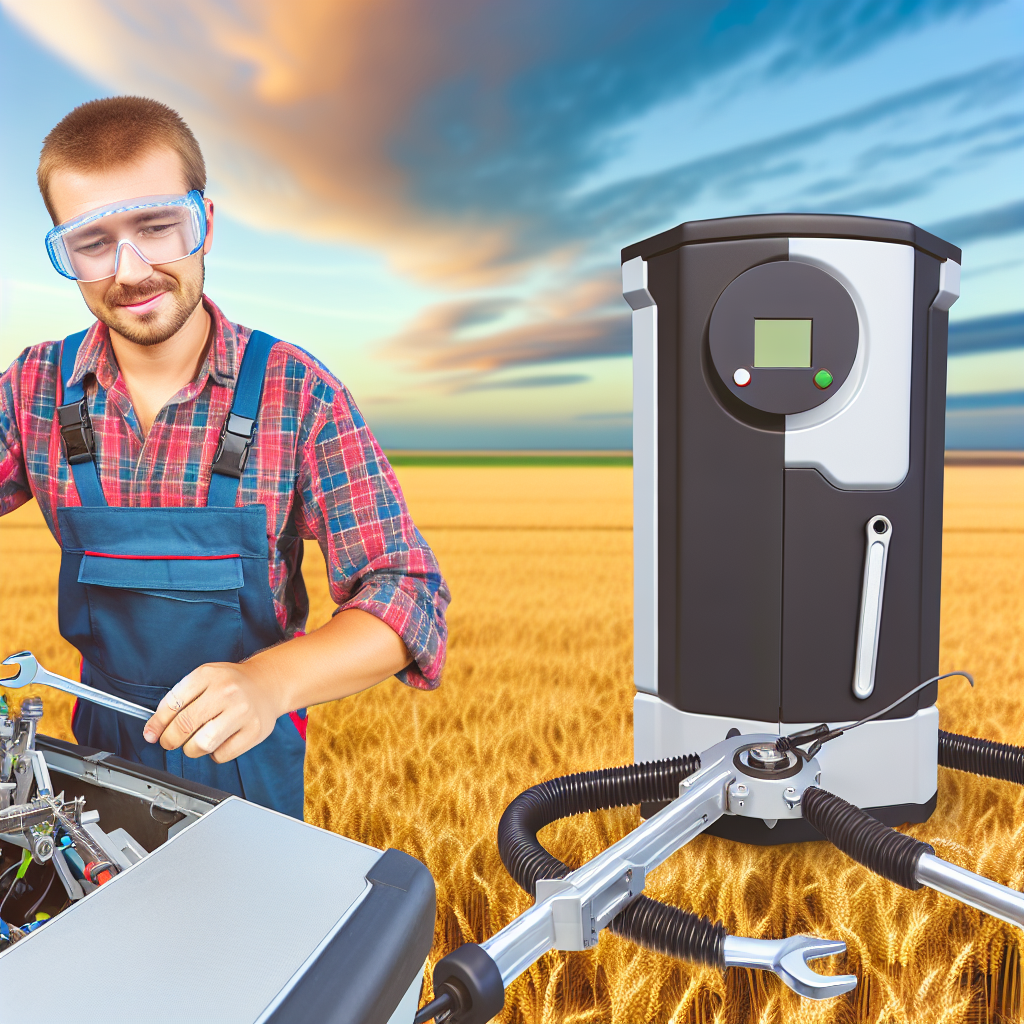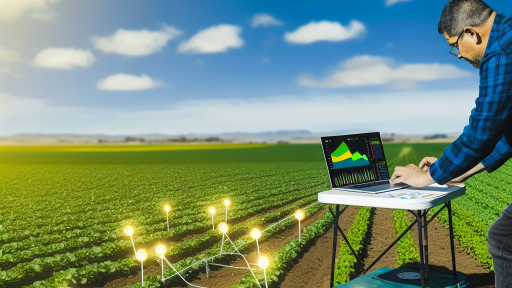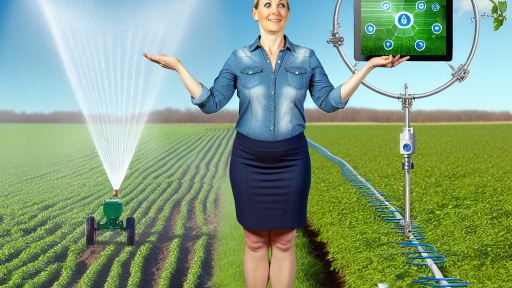Overview of Agricultural Automated Systems and Their Importance
Agricultural automated systems revolutionize farming practices.
They enhance efficiency and productivity in various operations.
As technology advances, these systems become increasingly vital.
Definition of Agricultural Automated Systems
Agricultural automated systems encompass various technologies.
These include robotics, sensors, and data analytics.
Such systems automate tasks like planting, watering, and harvesting.
Benefits of Agricultural Automation
Automation significantly reduces the need for manual labor.
Farmers can focus on strategic decision-making instead.
Moreover, it increases the accuracy and consistency of farming operations.
Additionally, automated systems provide valuable data insights.
Importance in Modern Agriculture
Modern agriculture faces challenges like food security.
Automated systems help address these challenges effectively.
They optimize resource use, minimizing waste and costs.
This technology also supports sustainable farming practices.
Examples of Automated Systems in Use
Precision irrigation systems help allocate water precisely.
Transform Your Agribusiness
Unlock your farm's potential with expert advice tailored to your needs. Get actionable steps that drive real results.
Get StartedSimilarly, drones monitor crop health efficiently.
Other systems assist in soil analysis and fertilizer application.
Farmers worldwide adopt these technologies for better yields.
Regular Maintenance Schedules
Importance of Regular Maintenance
Regular maintenance is vital for agricultural automated systems.
It prevents unexpected failures and costly repairs.
Moreover, consistent upkeep extends the lifespan of equipment.
Subsequently, it ensures optimal performance and efficiency.
Creating a Maintenance Schedule
Establish a detailed maintenance schedule for your equipment.
Start by evaluating the manufacturer’s recommendations.
Next, list all components that require routine checks.
Furthermore, assign specific tasks to operators or technicians.
Finally, ensure everyone understands their responsibilities.
Key Maintenance Practices
Regularly inspect and clean machinery to ensure proper function.
Check fluid levels and replace fluids as needed.
Lubricate moving parts to prevent wear and tear.
Replace worn parts before they cause breakdowns.
Test electrical connections and replace any faulty components.
Documentation and Tracking
Keep meticulous records of all maintenance activities.
Use software tools or logs to track maintenance history.
This documentation helps in identifying recurring issues.
Additionally, it assists in planning future maintenance tasks.
Training Staff on Maintenance Procedures
Train all staff on proper maintenance techniques.
Empower them to conduct basic troubleshooting.
Moreover, emphasize the importance of reporting problems early.
Showcase Your Farming Business
Publish your professional farming services profile on our blog for a one-time fee of $200 and reach a dedicated audience of farmers and agribusiness owners.
Publish Your ProfileRegular training sessions foster a culture of proactive maintenance.
Reviewing and Updating Maintenance Strategies
Regularly review maintenance schedules for effectiveness.
Adjust practices based on equipment performance and feedback.
Implement new technologies that can enhance maintenance efforts.
Lastly, stay informed about industry standards and best practices.
Cleaning Protocols: Keeping Equipment Free from Debris
Establishing a Routine
Regular cleaning of agricultural automated systems is crucial for optimal performance.
Schedule cleaning tasks based on usage frequency.
Consider seasonal factors that may impact cleaning needs.
Identifying Common Debris
Recognize common debris types that affect equipment functionality.
Soil, plant material, and chemical residues often accumulate.
Pay special attention to sensors and moving parts.
Choosing the Right Cleaning Tools
Select appropriate cleaning tools for the job at hand.
Use soft brushes to avoid damaging sensitive components.
Employ vacuum systems to efficiently remove loose debris.
Implementing Effective Techniques
Develop a systematic approach to cleaning your equipment.
Start by removing larger debris before tackling finer particles.
Utilize air compressors to blow out hard-to-reach areas.
Documenting Cleaning Procedures
Create a checklist to standardize your cleaning process.
Document any issues or maintenance needs observed during cleaning.
Provide training for staff on proper cleaning techniques.
Monitoring Results and Adjusting Protocols
Regularly assess the effectiveness of your cleaning protocols.
Gather feedback from operators on equipment performance post-cleaning.
Make adjustments to cleaning schedules as necessary.
Storing Equipment Properly
Store equipment in clean and dry conditions to prevent future debris build-up.
Cover equipment when not in use to mitigate exposure to dust and debris.
Ensure pathways to storage areas remain clear to facilitate access.
Find Out More: Boost Crop Yields with Precision Agriculture Techniques
Inspection Procedures: Identifying Wear and Tear Early
Importance of Regular Inspections
Regular inspections are crucial for maintaining agricultural automated systems.
They help detect potential issues before they escalate.
Moreover, early detection minimizes downtime and costs.
Visual Inspection Techniques
First, visually examine all components for signs of wear.
Look for cracks, rust, or discoloration on metal parts.
Additionally, assess rubber and plastic components for brittleness.
Checking Fluid Levels
Fluid levels should be checked regularly to ensure proper operation.
Low oil levels can lead to engine damage over time.
Similarly, coolant levels must remain adequate to prevent overheating.
Assessing Electrical Connections
Next, inspect electrical connections for corrosion and loose wires.
Corrosion can interfere with the system’s performance.
Tighten any loose connections to ensure reliability.
Implementing a Maintenance Schedule
Creating a maintenance schedule helps streamline inspections.
Showcase Your Farming Business
Publish your professional farming services profile on our blog for a one-time fee of $200 and reach a dedicated audience of farmers and agribusiness owners.
Publish Your ProfileSchedule monthly checks for critical components.
Furthermore, adjust the schedule based on usage and wear patterns.
Utilizing Technology for Monitoring
Consider using sensors to monitor system performance in real-time.
Data analytics can help identify performance trends and issues.
This proactive approach enhances maintenance efficiency.
Find Out More: Leveraging Satellite Imagery for Precision Farming
Software Updates: Ensuring Optimal Functionality
Importance of Regular Updates
Regular software updates enhance the performance of automated systems.
They introduce critical security patches to safeguard against vulnerabilities.
Moreover, updates often include feature enhancements that improve usability.
This ensures that farmers can maximize efficiency in their operations.
Identifying When to Update
Monitoring software release notes helps identify important updates.
Additionally, check notifications from software providers for new versions.
Setting reminders for regular checks can keep systems up-to-date.
Consider updates during off-peak times to minimize disruptions.
Best Practices for Implementing Updates
Before initiating an update, back up the existing system data.
This prevents data loss in case of unexpected issues during installation.
Test updates in a controlled environment before full implementation.
Additionally, consult user manuals or vendor support if needed.
Maintaining Compatibility
Check compatibility of updates with existing hardware and software.
Incompatibility can lead to system failures or reduced functionality.
Consider updating related software or hardware simultaneously.
This ensures seamless operation across all components of the system.
Utilizing User Feedback
User feedback can provide valuable insights into update effectiveness.
Participate in forums or groups dedicated to agricultural technology.
Share experiences to help others navigate similar software challenges.
Engaging with the community fosters a collaborative environment for problem-solving.
Discover More: Data-Driven Farming: Utilizing Crop Sensors Effectively

Calibration Techniques: Maintaining Accuracy in Automated Systems
Importance of Calibration
Calibration ensures that your agricultural automated systems function accurately.
It helps maintain reliable performance in various farming operations.
Regular calibration can prevent costly mistakes and ensure optimal yield.
Establishing a Calibration Schedule
Establishing a calibration schedule is vital for maintaining accuracy.
Identify the key times for calibration, such as pre-planting and mid-season.
Document these schedules clearly to avoid missing important dates.
Choosing Proper Calibration Tools
Selecting the right calibration tools is essential for accurate measurements.
Consider using certified devices for precise data collection.
Regularly maintain and replace tools to ensure their reliability.
Steps for Effective Calibration
Follow systematic steps for effective calibration of your systems.
- First, gather all necessary tools and equipment.
- Next, review the manufacturer’s specifications and guidelines.
- Then, perform initial measurements and record data.
- Afterward, make necessary adjustments based on findings.
- Finally, remeasure to confirm that adjustments were successful.
Monitoring Calibration Results
Regularly monitor calibration results to ensure ongoing accuracy.
Compare results with previous measurements for consistency.
Make adjustments as needed based on performance data.
Showcase Your Farming Business
Publish your professional farming services profile on our blog for a one-time fee of $200 and reach a dedicated audience of farmers and agribusiness owners.
Publish Your ProfileTraining and Best Practices for Operators
Training operators properly enhances calibration accuracy.
Ensure they understand the operation of calibration tools.
Regular workshops can reinforce best practices in calibration techniques.
Encourage an environment of continuous learning and improvement.
Discover More: Innovations in Vertical Farming for Modern Farmers
Safety Measures: Protecting Operators and Equipment
Understanding the Importance of Safety
Safety is a critical aspect of agricultural automated systems.
It protects both operators and valuable equipment.
Accidents can lead to severe injuries and costly damage.
Implementing safety measures greatly reduces these risks.
Regular Safety Training
Regular training keeps operators informed about potential hazards.
It also ensures they know how to respond effectively in emergencies.
Training should include both theoretical and practical components.
Additionally, refresher courses are beneficial for existing staff.
Proper Personal Protective Equipment (PPE)
Using the right PPE is crucial for operator safety.
Operators must wear protective gear based on their tasks.
This may include helmets, gloves, and safety goggles.
Furthermore, ensure PPE is inspected regularly for wear and tear.
Emergency Procedures
Establish clear emergency procedures for all automated systems.
These procedures should be easily accessible to all operators.
Regular drills can help reinforce these procedures effectively.
Make sure everyone understands their roles in an emergency situation.
Regular Maintenance and Inspections
Regular maintenance prevents equipment malfunctions that can cause accidents.
Schedule inspections based on the manufacturer’s recommendations.
Keep accurate records of all maintenance activities.
This documentation can prove invaluable during safety audits.
Signage and Labels
Clearly label all automated systems and hazardous areas.
Signage should be visible and easy to read for operators.
Use universally recognized symbols for safety instructions.
These visual aids enhance awareness and can prevent accidents.
Monitoring and Surveillance
Implement monitoring systems for critical functions of automated systems.
These systems can provide alerts for unusual activities or failures.
CCTV can also be used to ensure operator safety in hazardous environments.
Regularly review footage to identify any safety concerns that arise.
Troubleshooting Common Issues
Identifying System Failures
Start by observing the automated system’s behavior.
Look for any unusual sounds or warning messages.
Check for error codes displayed on the control panel.
Note any discrepancies in the system’s expected performance.
Gather data and logs from the system to aid in diagnosis.
System Restart and Reset
If you encounter a failure, try restarting the system first.
Turn off the main power and wait for a minute.
Showcase Your Farming Business
Publish your professional farming services profile on our blog for a one-time fee of $200 and reach a dedicated audience of farmers and agribusiness owners.
Publish Your ProfileThen turn it back on to allow systems to reset.
Observe if the issue persists after the restart.
Inspecting Connections and Components
Check all electrical connections for signs of wear or damage.
Loose connections can cause intermittent failures.
Inspect sensors and valves for proper operation and calibration.
Replace any components that appear faulty or malfunctioning.
Software Checks and Updates
Ensure the system software is current.
Check for available updates from the manufacturer’s website.
Install any patches or upgrades to improve performance.
Verify that configurations are set correctly post-update.
Running Diagnostic Tests
Most automated systems have built-in diagnostic tools.
Run these tests to pinpoint specific failures.
Document the results for future reference.
Follow any troubleshooting guides provided in the user manual.
Seeking Professional Help
If issues persist after your troubleshooting efforts, contact support.
Reach out to the manufacturer’s customer service for assistance.
Have all relevant information ready, including model and error codes.
Consider hiring a technician for hands-on evaluation if necessary.




